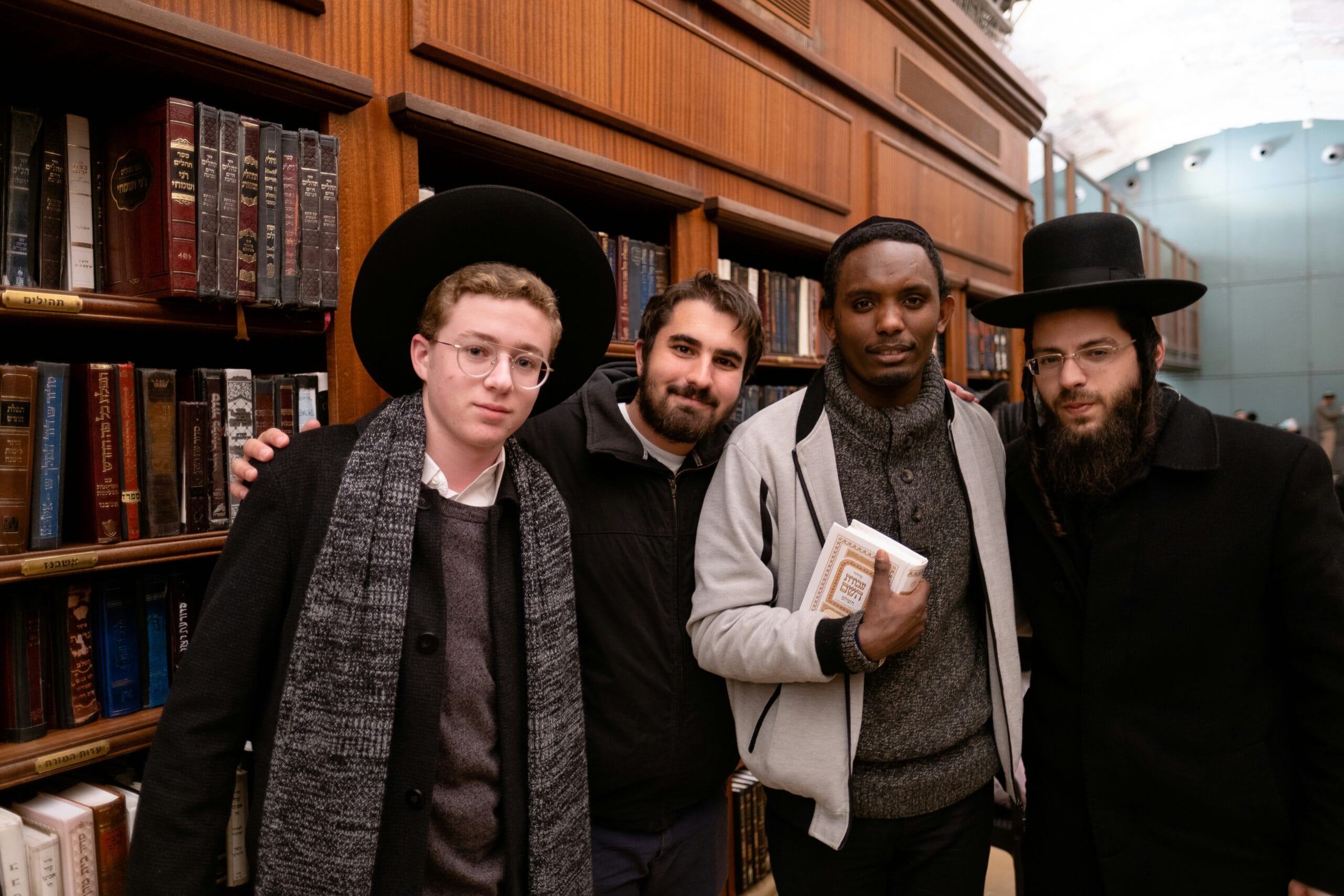
Have you ever wondered why some Jews wear black clothes and furry hats? Or the story behind the strings that dangle from their shirts? Why do religious Jews sway when they pray? And why do they grow their forelock hairs so long?
On this full day tour to the Jewish Quarter of Jerusalem’s Old City, we will learn all about the various streams of Judaism, visit their synagogues and study halls, demystify Jewish customs, and experience the Western Wall.
Our tour begins in Ha-Hurva Square, the main square of the Jewish Quarter, where we will discuss the history of the Jewish Quarter and how it developed over time. The first stop of our tour will be to the Karaite community museum, which houses the oldest continuously used synagogue in Jerusalem dating back to the 8th century. The Karaites broke off from mainstream Rabbinic Judaism in the 2nd century and are Biblical literalists who reject Jewish oral traditions such as the Mishna and Talmud.
From here, we will walk back to Ha-Hurva Square to visit the small Ramban Synagogue named after Rabbi Moshe ben Nachman or Ramban (1194-1270). The Ramban founded this synagogue in 1267 and it formed the nucleus for what eventually became the Jewish Quarter. At the time he arrived here from Iberia, there were only two Jewish brothers living in the Holy City. We will take this opportunity to discuss some of the differences between Sephardi and Ashkenazi Jewish communities.
After another short walk, we will take the elevator to the roof of the Hurva Synagogue where we will recount the tale of Yehuda HaHasid, who led a group of 1,500 Ashkenazi Jews to Jerusalem in the year 1700. The survivors of this perilous journey built their house of prayer here on the ruins of a previous synagogue only to have it destroyed in 1721 by the Ottoman authorities. Rebuilt in 1837, it was again destroyed by Jordanian shelling during Israel’s War of Independence in 1948. After Israel liberated the city in 1967, it lay in ruins for many years until it’s rededication in 2010. Like the phoenix that rises from its ashes, the Hurva Synagogue has become the symbol of the Jewish Quarter.
From here, we continue on to the Tzemakh Tzedek Chabad-Lubavitch synagogue where we will investigate Hasidism in general and the Chabad movement in particular. A product of 18th century Europe, Hasidic Judaism is a mystical and ecstatic tradition born out of a period of chaos and war.
With branches in over 100 countries, the Chabad-Lubavitch movement has distinguished itself for being the most worldly of the Hasidic movements. We will recount the history of this movement and their charismatic leader, Rabbi Menachem Mendel Schneerson, who some contend is the Messiah.
Before leaving, we will climb to the second floor to see a dedicatory inscription by Eliyahu David Sassoon of Bombay who financed this expansion. The Sassoons made their riches in the opium trade in Imperial India and become the richest Jewish family in Asia. We will take this opportunity to discuss the fascinating history of the unique Jewish communities of India.
Before lunch, we will continue to a complex of four interconnected Sephardic Synagogues built in stages from the 16th to the 18th century. Though all four synagogues are Sephardic, they serve different communities with differing customs. The largest is the Yochanan Ben Zakai (Ribaz) synagogue. According to tradition, this synagogue sits on the site where the Torah study hall of the 1st century Jewish sage (Ribaz) credited with saving Judaism in the aftermath of the destruction of the Second Temple in 70 CE. From here, we head back to the heart of the Jewish Quarter for lunch.
After lunch, we walk down towards the Western Wall, but stop first at the “Ezrat Israel” mixed-prayer plaza. Following years of protests by the “Women of the Wall” organization, which demanded a mixed-gender prayer area, this plaza was designated by the government in 2013 for that purpose. We will use this opportunity to discuss the “Women of the Wall” Movement, gender roles in Judaism, and the history of the more liberal Reform and Conservative movements.
From here we will continue to the Western Wall Plaza and discuss the history of the site and how this external retaining wall became the focal point of Jewish prayer around the world. After some free time to pray at the wall, we continue on to the Christian Quarter for our last stop of the day.
We arrive in the heart of the Christian Quarter in an area known as the Muristan, where we will visit a group of “Religious Zionist” Jews who have established a Yeshiva (seminary) a short distance from the Church of the Holy Sepulchers. These religious Jews belong to a new type of orthodox Jewry, which is rooted in the Land of Israel, and has developed over the past one hundred years.
Considered “settlers” by many in the international community, this is a unique opportunity to meet some of them in person and to inquire into their beliefs. From here it is only a short walk to the Jaffa Gate and the end of the tour.
For Questions, Contact Dr. Eyal
At 053-3328322
Sign up to our mailing list and receive our newsletter with updates on upcoming tours, lectures, workshops, and courses.


